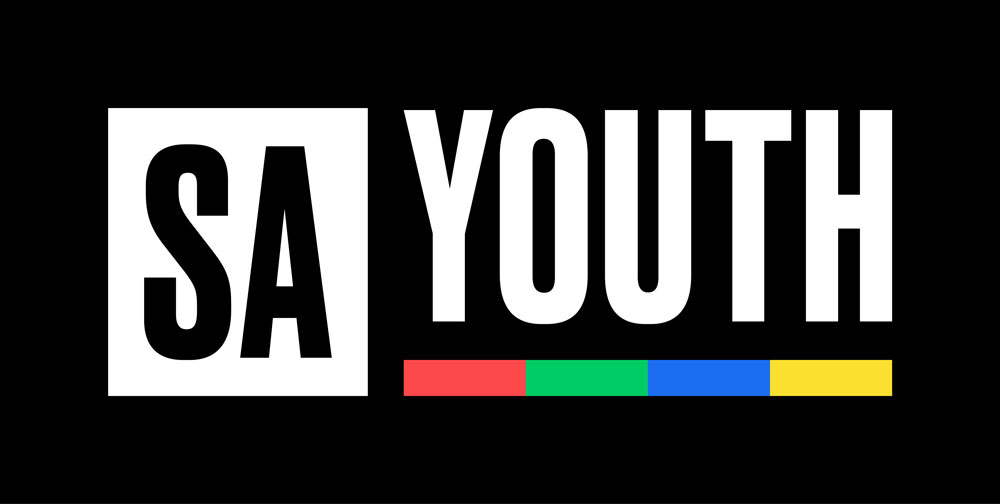

SA Youth connects young people to work and employers to a pool of entry level talent.
Are you a work-seeker?
August 2018
August 9th marks Women’s Day in South Africa and serves as a reminder of the courageous and resourceful women of 1956 who fought for freedom and dignity. Despite this, participation rates in the labour force are lower for young women than for young men even with an increased focus on legislation and diversity in the work place. More needs to be done to include women in the economy and increase women’s opportunities for the benefit of their families and societies.
This edition of Breaking Barriers takes a closer look at the barriers that young women face in finding and keeping jobs and livelihoods. The recent Quarterly Labour Force survey (QLFS) results, released by Statistics South Africa, continue to paint a dire picture of unemployment in South Africa, with the youth employment rate dropping to its lowest in the last five years. Focused interventions and support are required to make sure the labour market can deliver for young people and women.
This quarterly analysis from Harambee Youth Employment Accelerator draws on data gained from our engagement with over 450,000 young work-seekers who are at risk of sustained, long-term unemployment – 63% of which are young women. Harambee uses this research to develop insights and drive interventions that can more effectively transition young people into jobs and address the global challenge of youth unemployment.
Brought to you in partnership with:
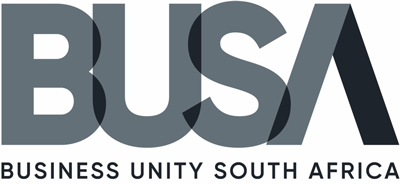
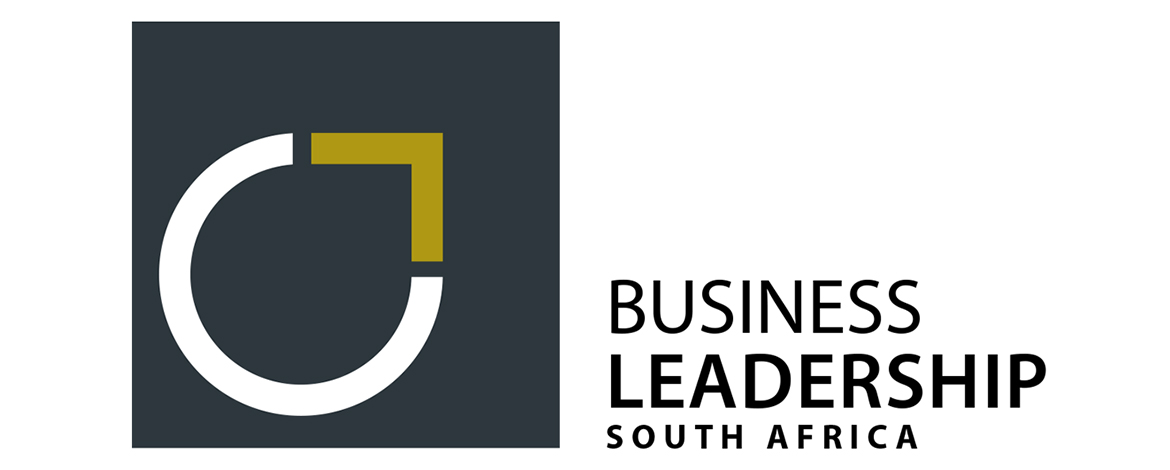
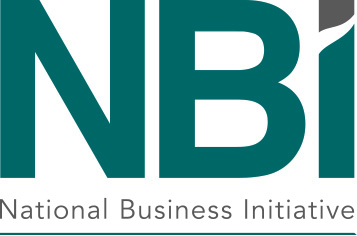
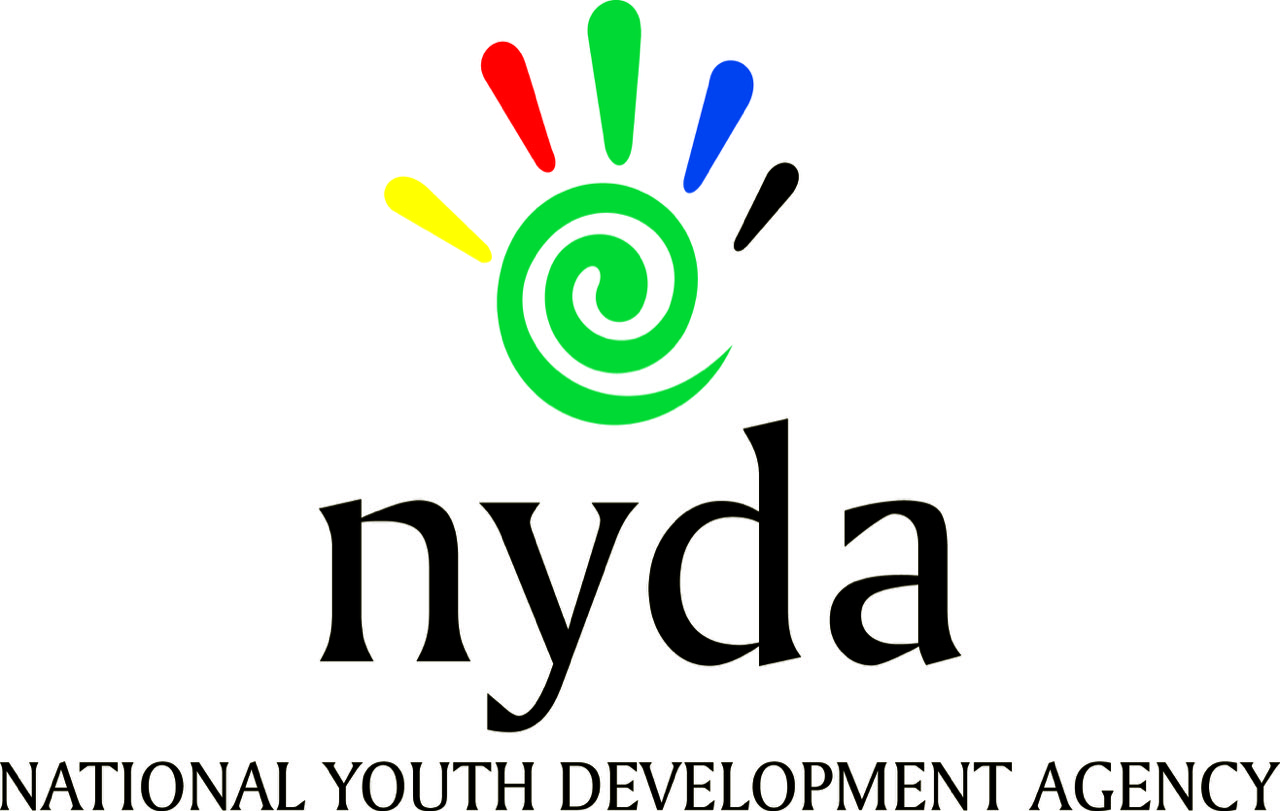
As measured by the Quarterly Labour Force Survey (QLFS), the national employment rate for youth aged 18 – 28 decreased to 51.8% this quarter, which is a 0.7 percentage point decline compared to last quarter. This is the lowest experienced in the past five years and tracks with the overall national employment rate for the quarter, which also dropped to 72.8%.
Employment numbers during the second quarter of 2018 also did not grow significantly and the growth rate was in fact lower than most quarters over the past two years. Coupled with a rise in discouraged work-seekers during this period, the unemployment numbers reflected in QLFS are the highest they have ever been: 27.2% nationally and 48.2% for youth.
Regarding gender, the QLFS data indicates that women experience a higher unemployment rate nationally at 29.5% compared to men (25.3%). Young women are also more vulnerable to becoming NEETS (Not in Employment, Education or Training) versus their male counterparts.
Harambee’s employment rate, calculated from real-time data, is lower than that of the quarterly labour force survey. This is because Harambee reaches excluded youth who tend to face higher structural barriers to employment. Compared to the decline in QLFS youth employment rate, the Harambee employment rate has remained largely static at 22.1% this quarter.
Whilst Harambee’s rate still largely trends with the broader labour market, this does provide a positive market signal for the work readiness, matching and placement interventions offered by Harambee.
Harambee has demonstrated that inclusive, scaleable solutions to tackle youth employment are possible. This edition of Breaking Barriers outlines the ‘gender penalties’ experienced by young women in their search for a first job, and how these can be solved to improve their likelihood of success in employment
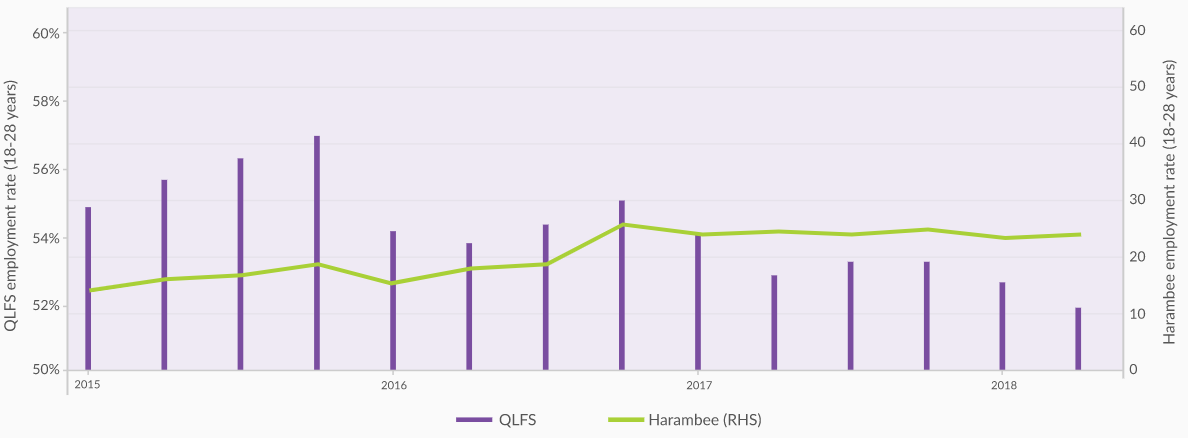
*The Harambee employment rate is measured up to 30 April 2018. Data are not drawn from Stats SA data but reflects a sample of youth who are typically living in grant-dependent households and have finished Matric in a township or rural school.
** Youth includes all 18-28 years old
*** Note: Harambee employment rate is much lower than the national employment rate as Harambee does not include the informal sector and specifically targets low-income urban youth excluded from the formal economy.
INSIGHT 1
A topical issue in global society today is whether there is equal access to opportunities for men and women in the economy. In a labour market such as South Africa, young women experience far more constraints than men in securing employment and pay a penalty for being a woman. From Harambee’s data, it reflects that men are 8 – 9% more likely to find work than women; however, once in employment there is little difference across genders in their ability to succeed and perform in their jobs (including work that if of a higher complexity) or remain in employment in the long-term (more than 1 year).
There is no single reason for this penalty, as it can be attributed to a combination of socio-economic circumstances, education, individual context, and hiring expectations within the labour market. The data also does not reflect additional challenges that women may experience at work.
Harambee’s model works to correct for some of these constraints, thus improving the job prospects for young women. The comprehensive work seeker support and work readiness programmes Harambee provides to young people has contributed to this, as well as, the ongoing advocacy in the market on inclusive hiring practices.
Figure 1: Likelihood of Finding Employment
Source: Harambee Longitudinal Study, 2018
INSIGHT 2
Women bear a disproportionate share of household responsibilities in South Africa including child care, elder care, and household upkeep (unpaid care work). These roles reduce the amount of time that young women have to spend on searching for a job (see Figure 3).
Harambee candidates reflect these experiences, with 49% of young women reporting childcare responsibilities as compared to only 26% of young men.
Figure 2: Hours Spent on Activity Per Day
Source: Statistics South Africa Time Use Survey, 2010 and Harambee Baseline Survey
INSIGHT 3
Finding employment opportunities through one’s social network is an incredibly important job search strategy for the youth – as has been highlighted by our previous Breaking Barriers report. We find that young men and women are equally likely to use social networks to search for work. However, women who use social networks as their only job search strategy are less likely to find employment through this channel than men who also only use social networks.
Moreover as figure 4 illustrates, young women are less likely to be involved in volunteer work and community leadership – activities that not only expand the social networks for young people, but provide valuable experiences which can help them find jobs.
Figure 3: Percentage of Harambee Candidates Engaged in Community Activities
Source: Source: Statistics South Africa Time Use Survey, 2010 and Harambee Baseline Survey

Barloworld Equipment is an employer that has been deliberate in its efforts to hire women. Historically Barloworld was only able to fill 10% of its yearly intake of apprenticeships in heavy earth moving equipment with women. But through a commitment to gender equality and to hiring more women in traditionally male dominated roles, they have been able to turn that statistic upside down – with 90% of their intake over the last two years being women. Barloworld Equipment partnered with Harambee to source, screen, and prepare young women for the opportunity (which included an innovative engine building exercise and physical training to prepare them for the rigours of the job!).
Today 70 young women are on a three year apprenticeship journey with the company. Mbali Dlalani is one such young woman who describes the experience: “It’s not easy being a woman in a male dominated world but we are definitely going to make it!…I’ve gone from being unemployed to having a very exciting job that is never mundane. I get to go out, I get to build and fix things. I’m very proud of my new life.”